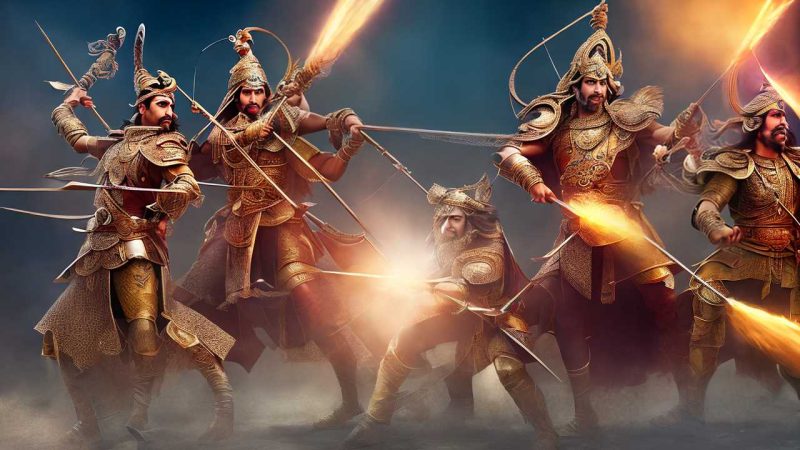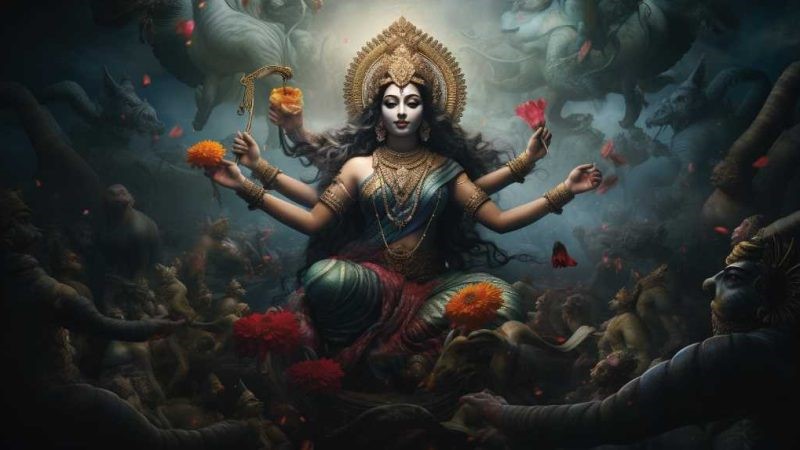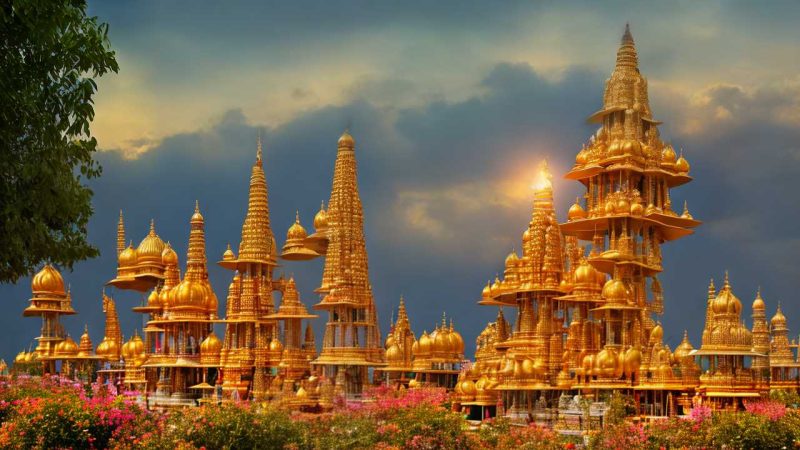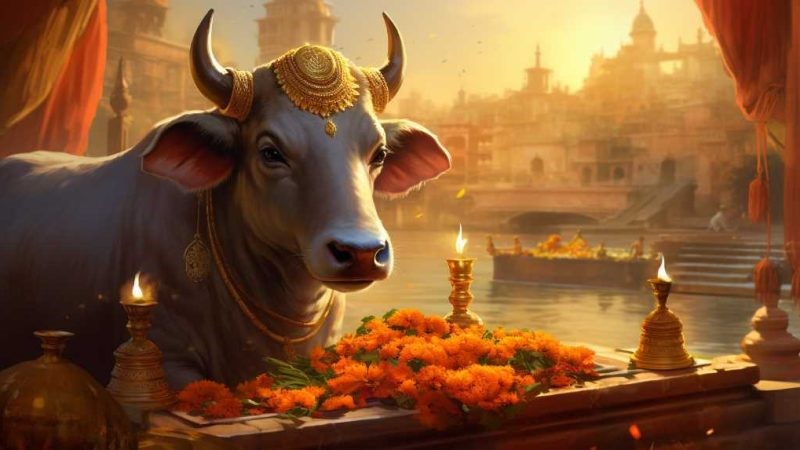Ancient Narratives Stories From Hindu Mythology
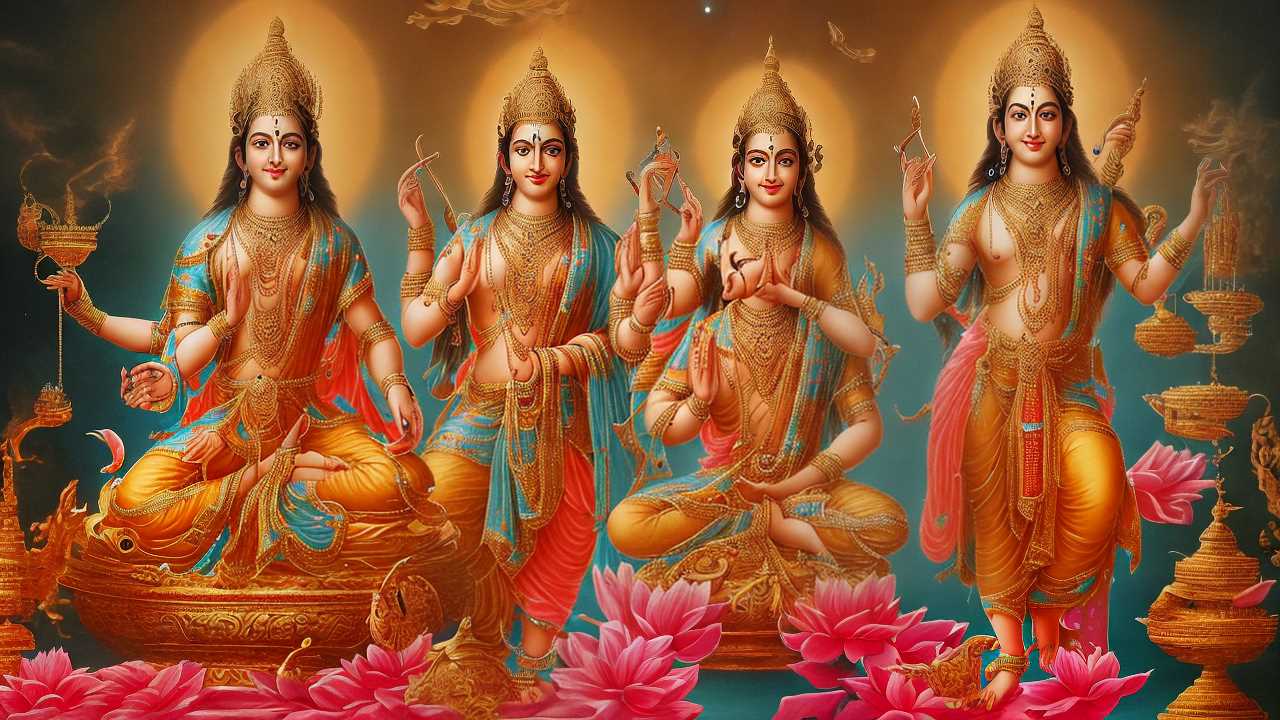
Hindu mythology is a rich collection of stories from ancient India that give us a glimpse into the old culture and beliefs. These stories aren’t just for entertainment; they teach important lessons and ideas that have influenced Indian society and religion for thousands of years.
For example, creation stories explain how the world came to be, while epics like the Ramayana and Mahabharata teach us about right and wrong through complex situations.
Looking at the adventures of gods like Krishna and Shiva helps us understand these stories’ lasting impact. They’re not just ancient tales; they still matter today because they can teach us about our history and help shape our future.
For instance, the story of Krishna teaches us about love and duty, showing how these values are timeless and still relevant in our lives. Similarly, Shiva’s tales often highlight the importance of balance and respect for all life, which is something we can all learn from.
By using these stories as examples, we can learn from the past and get insights for our present and future. In a friendly conversation, we might talk about how these myths can help us tackle everyday challenges or provide comfort in tough times.
The stories of Hindu mythology are like a treasure chest full of old wisdom that’s still valuable today.
The Creation of the Universe
In Hindu stories, they talk about how the universe began in their holy writings. One of these, the Rigveda, tells us about something called Brahman. It’s not a god like we might think, with a human shape and face, but more like an energy that’s everywhere and in everything. It’s what everything comes from.
Experts who study these old songs from the Rigveda say that the story of how everything began isn’t just about what happened first, second, third, and so on. Instead, it’s about how the universe keeps being destroyed and then reborn over and over again.
The Rigveda also talks about ‘sat’ and ‘asat’. ‘Sat’ means what exists, and ‘asat’ means what doesn’t exist. Before the universe started, there was both ‘sat’ and ‘asat’—like a mix of something and nothing, full of possibilities. This idea is really important because it helps us understand how Hinduism sees the universe. It’s like before anything we know existed, there was already the seed of everything that could be.
The Legend of Ramayana
The Ramayana is a story that’s important to Hinduism. It talks about duty and being good through its characters’ adventures. The story, written by Valmiki, teaches us about human life. It’s not just a story; it helps us understand how people can be good or bad.
Prince Rama, who is like the god Vishnu, shows us how to deal with tough situations. When Rama’s wife Sita is taken by the bad king Ravana, it starts a big fight. These events help us learn about right and wrong and teach us how to act in life.
Let’s break it down more. Rama has to deal with being sent away from home, which is tough. Then, when Sita is kidnapped, it’s not just a personal problem. It shows us the fight between good people and bad people, and it’s like a lesson on how to keep going when things get hard.
The battle with Ravana isn’t just an exciting part of the story; it’s a way of showing that good can win over evil. This story is full of lessons that are useful for everyone, both in their own lives and in how they work with others. It’s like a guide on how to be good and do the right thing.
Mahabharata: The Great War
The Mahabharata tells a story about a big war called the Battle of Kurukshetra. This war is at the center of the story, showing how people often have to choose between doing what is right and what is wrong.
The main characters, the Pandavas and the Kauravas, are related but have different goals and beliefs. This shows how people can struggle to decide what is the right thing to do.
Experts think this 18-day war can teach us about the fights we all have inside us about what is right and wrong. During the war, there are important lessons shared, especially in the Bhagavad Gita, about our duties, what is fair, and how to live a good life.
The Mahabharata is remembered for its deep look at these choices and how people keep going even when things are hard.
Tales of Lord Krishna
When we think about the moral dilemmas in the Mahabharata, we often look at Lord Krishna for answers. More than just Arjuna’s charioteer, Krishna plays many roles, including being a divine guide and a diplomat. Scholars point out how Krishna’s advice to Arjuna is a key part of the Bhagavad Gita. This advice is about doing one’s duty and being righteous, and it goes deep into spiritual ideas.
Krishna’s stories are not just about war. They also tell about his playful childhood, his love life with the gopis, and his victories over evil. These stories show Krishna as a god who is involved in the world but also above it. They give those who worship him and those who study religion and ethics a lot to think about.
For example, when Krishna lifts the Govardhan Hill to protect the villagers from a storm, it shows his strength and his care for people. This act is a specific example of how Krishna’s divine power and human-like compassion come together in the stories about him. It’s a reminder that in tough times, we can find both practical solutions and spiritual support.
Shiva: The Cosmic Dancer
Shiva, known as Nataraja or the Lord of Dance, performs a dance that holds a deep meaning in Hindu beliefs. His dance, called Ananda Tandava or the Dance of Bliss, shows the cycles of the universe – how everything begins, lasts, and then falls apart. This idea isn’t just a traditional image; it reflects a key part of Hindu philosophy.
Art and ancient writings show Shiva’s dance, which represents the idea that the universe is full of moving, dynamic energy.
When we think about Nataraja’s dance, it’s like a symbol for how the universe works, with its constant rhythm of creating, maintaining, and eventually ending things. The dance is said to happen in a place called ‘Chidambaram’, which people see as the spiritual heart of the universe. It’s a place that stands for higher understanding and going beyond the physical world.
In his dance, Shiva is thought to destroy ignorance and give knowledge, which helps believers remember that even though things change, some parts of reality stay the same.
Conclusion
Hindu mythology is full of stories that help us understand old Indian beliefs about the world, what’s right and wrong, and deep thoughts. These stories start with how the world was created and include big adventures like the tales of Ramayana and Mahabharata. They also tell us about gods like Krishna and Shiva in many different ways. These stories are more than just old tales; they’ve helped shape what people value and believe in for generations. They’re still really important today, helping people think and talk about their faith and culture.
For example, the story of Lord Krishna as a playful child teaches the value of joy and innocence, while his role as a wise guide in the Bhagavad Gita shows the importance of good advice and leadership. The epic of Ramayana offers lessons on loyalty and duty through Lord Rama’s journey. These stories aren’t just for entertainment; they’re lessons on how to live a good life. They’re written in a way that feels like someone is telling you the story, which makes them easy to remember and share.
Each narrative is packed full of interesting details that bring the characters and their worlds to life.

